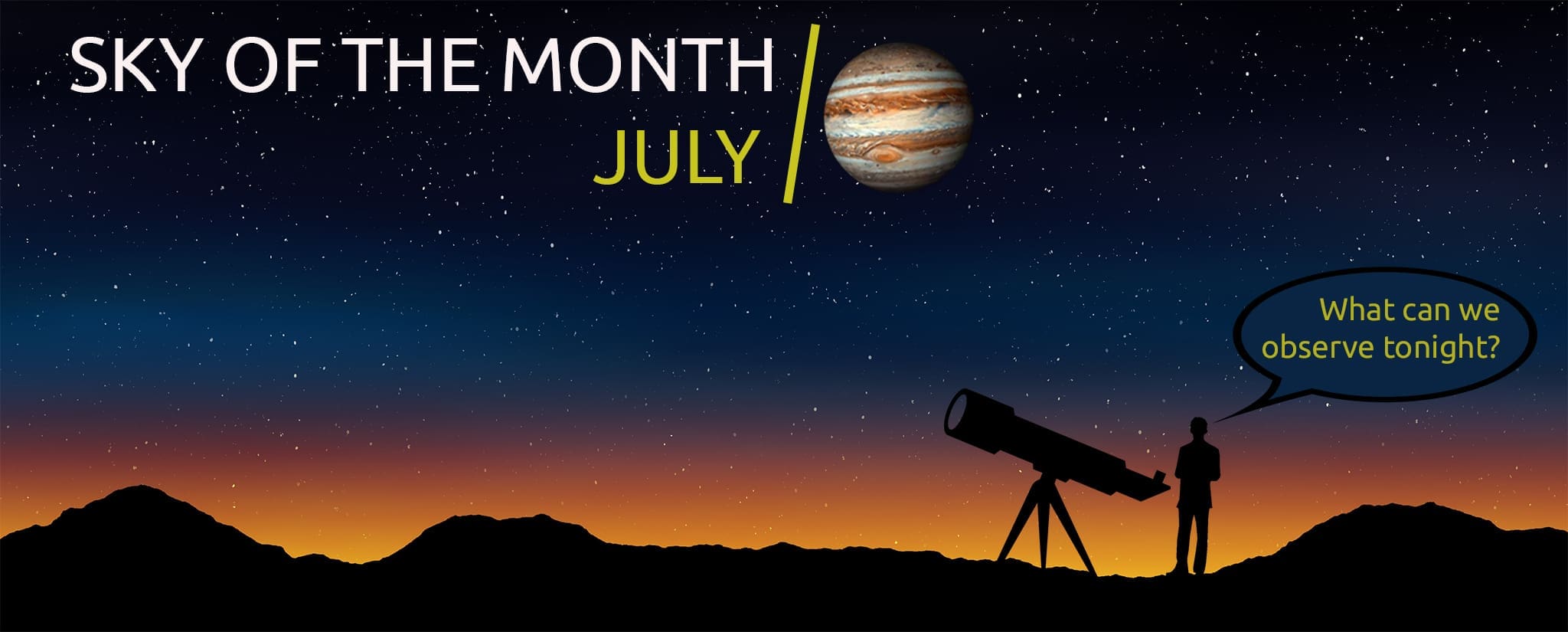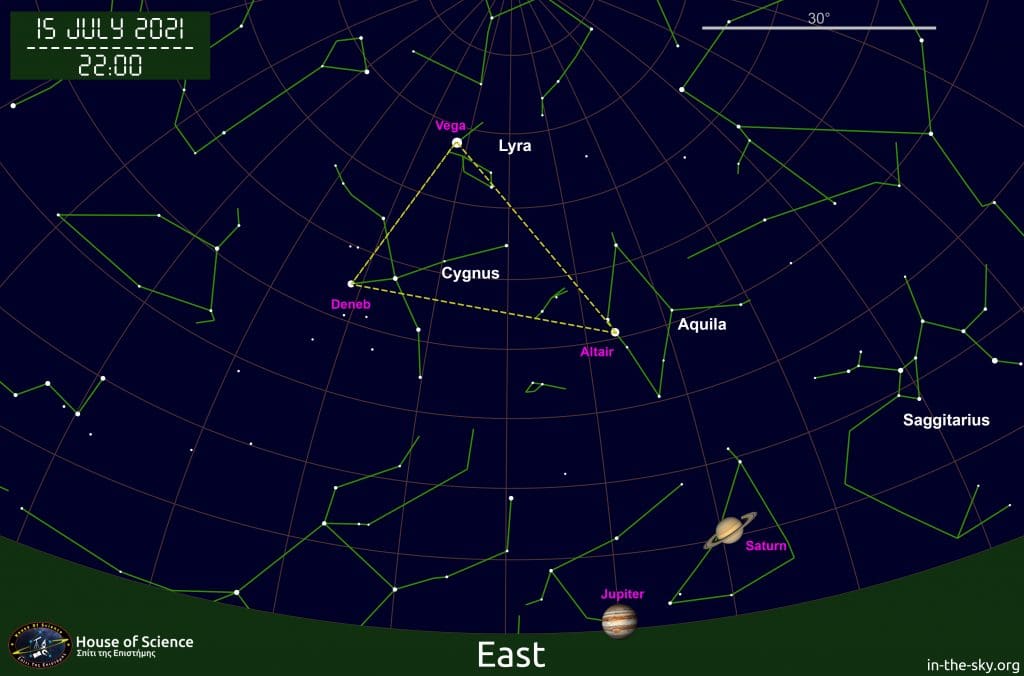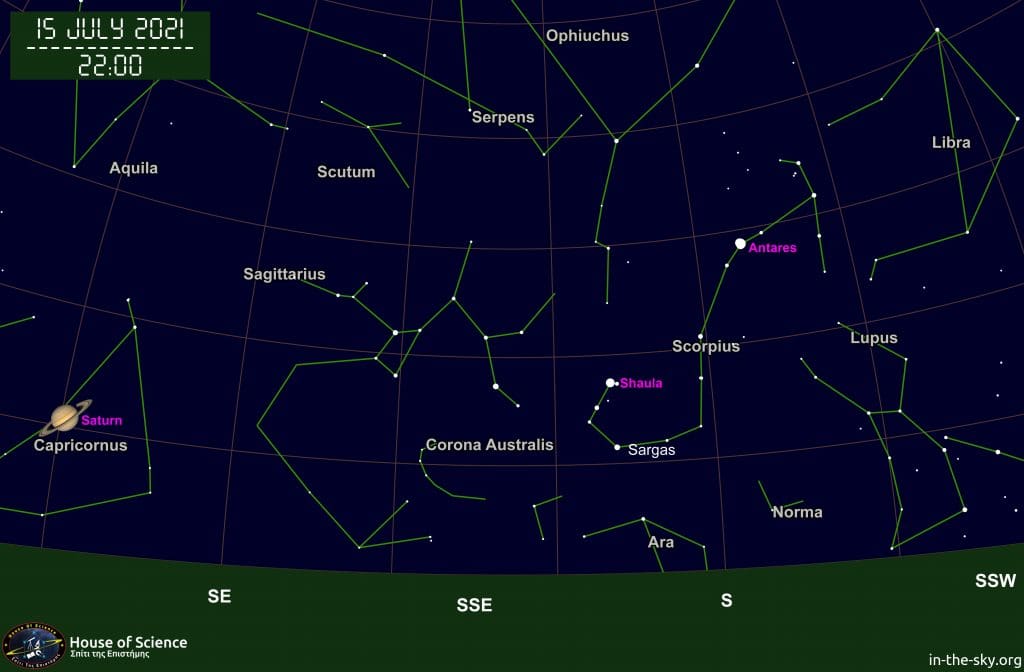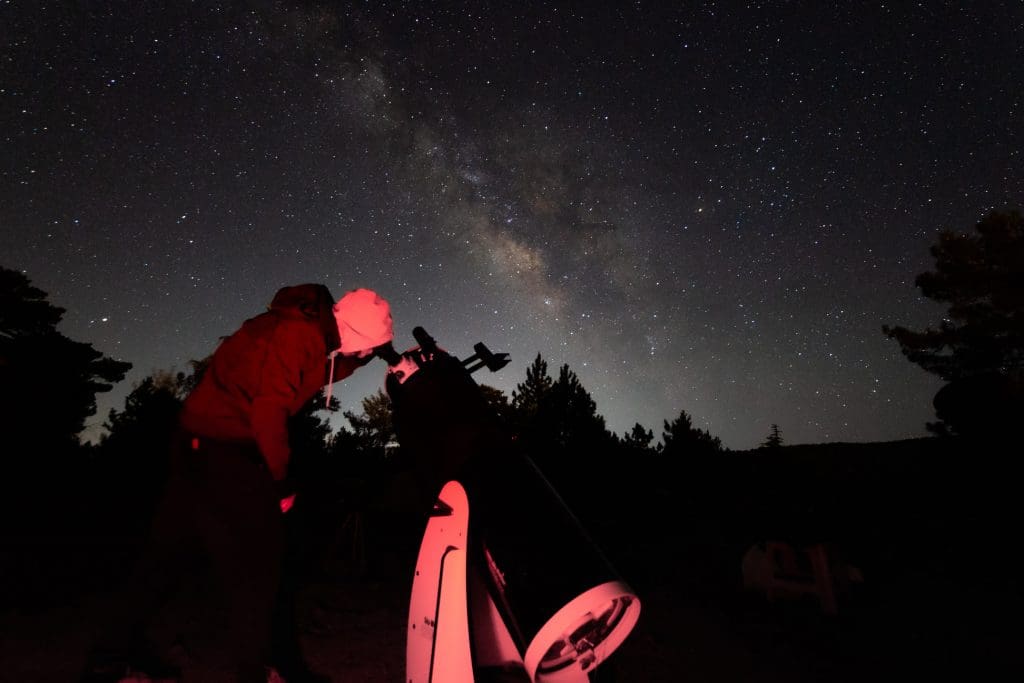
Dear friends of Astronomy, we are in the middle of summer, with the winter constellations almost gone and the summer constellations keeping us company until September. Therefore, let’s explore some of the targets that you can observe in July.
Observing the Moon
The moon always catches our eyes wherever it is in the night sky. On July 10 we will have a New Moon, which is the only night when the moon will not be visible. With the passing of days the moon will appear brighter and brighter in the sky reaching its maximum, where on July 24 we will have a full moon.
Fun fact: New moon nights are ideal for stargazing as the moon does not illuminate the sky, thus improving the quality of the observation and making the celestial targets appear brighter.
The summer triangle with the famous Eagle

The triangle is formed by the brightest stars of the constellations Cygnus, Lyra, and Eagle. Initially after dark, near the zenith, we detect the star Vega in the constellation Lyra. Then we turn our gaze eastward, finding the stars Deneb and Altair, which belong to the constellations Swan and Eagle respectively. In this way, we form the summer triangle that mediates the summer months and very easily orientates us in the celestial sphere.
Fun fact: Altair is one of our nearest stars, only about 17 light years away and is also the 12th brightest star we can observe.
Scorpio and Sagittarius go hand in hand

The Sagittarius has a characteristic teapot shape with the handle on the left and the spout on the right. In the constellation of Scorpio, we find the particularly bright star Antares and the star named Shaula, which in Arabic means “raised tail” and represents the sting of the scorpion in the attack position.
Fun fact: Antares is large in size, its radius is 680 times the radius of our sun.
The Planets
Saturn: It rises around 21:15 (mid-month) and can be located near the constellation of Capricorn.
Jupiter: From the middle of the month, it rises around 22.15 and we can spot it near Saturn.
Venus: You will observe it in the West, after the Sun sets. It is the first bright celestial body to appear.
Fun fact: Venus rotates on its axis in reverse, compared to most of the other planets in the solar system. This means that on Venus, the Sun rises in the west and sets in the east, unlike on Earth.

